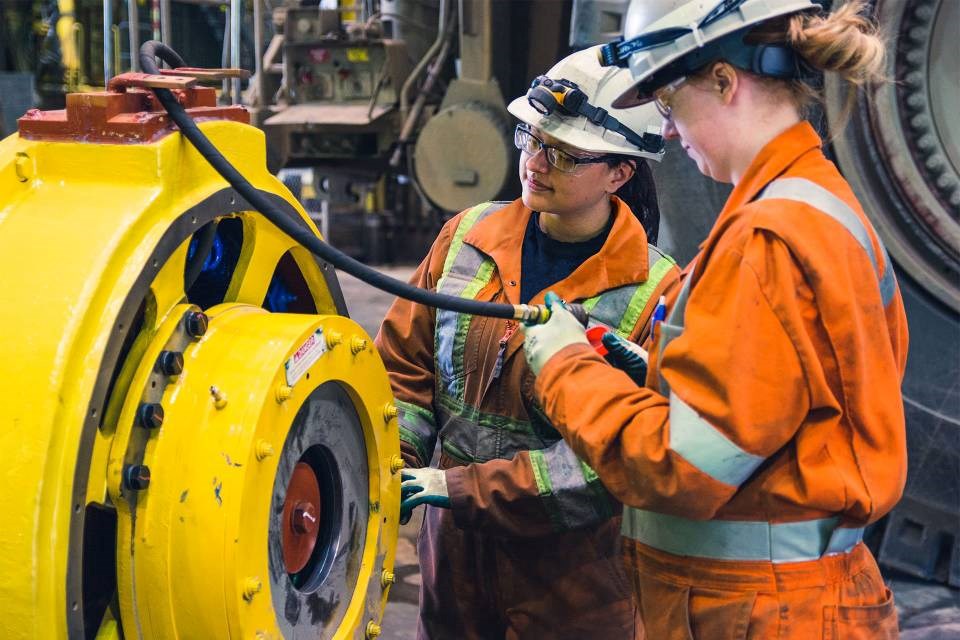Newcomers to Canada are choosing careers in mining at a lower rate than careers in other sectors, according to a new report from the Mining Industry Human Resources Council (MiHR).
Yet it’s a demographic that could help alleviate widespread labour shortages in an industry that is predicted to need 80,000 workers by 2030 to meet demand, as older workers retire and demand for metals balloons.
The national organization, which works with industry to help identify labour market trends and develop solutions, presented its most recent findings during a Jan. 25 virtual presentation hosted by the Canadian Institute of Mining, Metallurgy, and Petroleum (CIM).
The report — “Support for Newcomer Integration into Canada's Mining Sector” — will be available on the MiHR website shortly.
Victoria Burnie, MiHR’s manager of equity, diversity and inclusion, said immigrants are underrepresented across roles within the sector.
“Immigrants are just not choosing mining and/or mining isn't choosing immigrants in the job market competition stage,” Burnie said. “So we can conclude here that there are barriers here that are specific to the mining industry.”
At least some of that is explained by common challenges that newcomers face across industries, she said, including cultural differences, language barriers, and a general unfamiliarity with the local job market.
Newcomers may not understand how to build their network of contacts, or they might not know how to look for job openings, or hiring practices in Canada could differ from those they are used to, Burnie said.
“Overcoming these challenges often requires a combination of cultural adaptation, language enhancement, networking efforts and access to support services,” she said.
“And of course, employers and communities can play a crucial role in facilitating the integration of newcomers into the workforce by providing resources and creating inclusive environments.”
Want more business news from the North? Sign up for our newsletter.
In its research, MiHR wanted to pinpoint what support is currently available to mining companies and job seekers to more easily make the transition to the Canadian workforce, said Leslie Wolcott, MiHR’s director of equity, diversity and inclusion.
What MiHR found is that there is a tangle of requirements and processes at multiple levels — federal, provincial, regional and local — that can be challenging to navigate for anyone looking to hire newcomers in Canada.
At the federal level, for example, the Temporary Foreign Worker Program enables employers to hire foreign nationals on a short-term basis through various streams, whereas on a provincial level, employers can work through the Provincial Nominee Program to hire skilled international workers to fill a labour need.
Regionally, there are labour market boards that gather relevant information, but often also facilitate networking and best practices amongst employers, community partners, and job seekers. These are often supplemented by local organizations providing ancillary services.
Wolcott noted that postsecondary institutions, as they draw in international students, are also making an impact on labour challenges.
“This is also creating some challenges, in terms of integration into communities, but it has a great opportunity in terms of flow into the employment market,” she said.
Patrick MacKenzie, CEO of the Immigrant Employment Council of British Columbia, said newcomers need to be made aware of the opportunities the mining industry offers.
Among the roles filled by his organization — one of 12 such groups across Canada — connecting job seekers with employers is key among them.
“Absolutely, there are jobs out there that require a very specific credential. But for 80 per cent of the labour market, you don't; it's a skills question,” MacKenzie said.
“And so we want to work with employers to help them reframe what they're looking for.”
In the carpentry trade, for example, they could assess a newcomer’s skills — laying a floor, roofing, pouring concrete — and find employers that have openings for people with those same skills, while also showing newcomers the pathway to become a fully qualified carpenter in Canada, MacKenzie said.
On its own website, MiHR has tips for newcomers on how their training translates to the Canadian market, how to grow their professional networks, and even how to tailor their résumé for the industry.
Three years ago, MiHR launched a marketing campaign — “We Need Mining, Mining Needs You” — to boost awareness about the mining sector.
It was originally targetted at youth, but Will Meyer, MiHR’s director of marketing and communications, said it could also help newcomers see their value to the industry.
“Our awareness campaign showcases modern mining with the goals of raising awareness of mining and its profile, supporting industry HR (human resources) efforts, and making mining a career of choice,” Meyer said.
At the related website, miningneedsyou.ca, visitors can peruse more than 60 related careers. An interactive tool lets users explore six different mining work environments, including above and below ground, in processing plants, labs, offices and field work.
“The career profiles themselves include the educational requirements, and salary ranges, and what you can expect and how you can succeed in any given career,” Meyer said.
There’s even an interactive career quiz that enables users to gauge how they might fit into the industry based on their aptitude and interests, he added.
It can match users with mining careers sorted by levels of education, fiscal demand and experience, and it’s updated regularly as a user adds or removes career interests and skills to the profile, even laying out a pathway for advancement within a given career.




